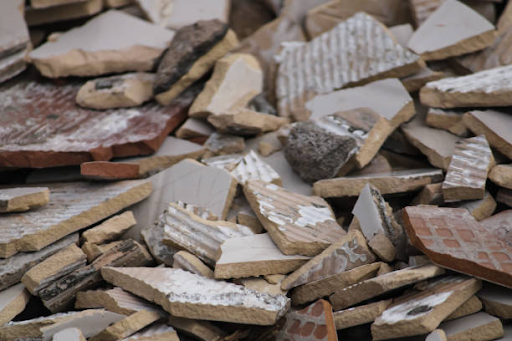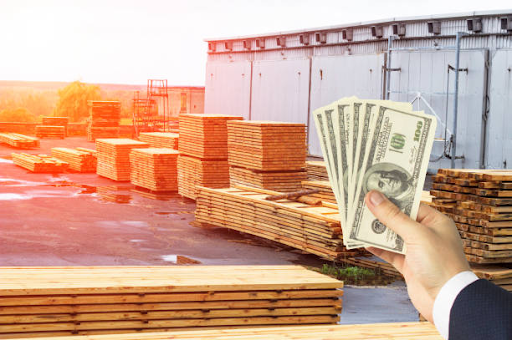In this day and age, where ecological supportability is turning out to be progressively significant, tracking down ways of decreasing waste and limiting our effect on the world is essential. The development business, specifically, is a huge supporter of the age of waste, with a significant measure of materials winding up in landfills after destruction or remodel projects.. To combat this issue, utilizing second-hand building materials has emerged as a sustainable solution that offers numerous benefits beyond cost savings.
How Second-Hand Building Materials Reduce Landfill Waste
How Second-Hand Building Materials Reduce Landfill Waste
Recycled fabricating materials allude to things like entryways, windows, ground surfaces, apparatuses, and, surprisingly, whole underlying components that have been utilized in past development projects. IRather than being disposed of and shipped off landfills, these materials can be rescued, repaired, and reused, offering an economical option in contrast to conventional development rehearses
The environmental benefits of utilizing second-hand building materials go beyond waste reduction. By reusing existing materials, we contribute to the conservation of valuable resources such as timber, metals, and energy. The extraction, manufacturing, and transportation processes required for new materials demand substantial amounts of resources and energy, leading to deforestation, increased greenhouse gas emissions, and ecological degradation. In contrast, reusing materials helps preserve forests, reduces carbon emissions, and minimizes the overall ecological footprint associated with construction activities.
Moreover, the use of second-hand building materials also results in energy savings. Manufacturing new construction materials consumes significant amounts of energy, contributing to carbon emissions and environmental degradation. On the other hand, reusing materials requires considerably less energy, leading to a reduced carbon footprint. By incorporating second-hand materials into construction projects, we can lower energy consumption and contribute to a more sustainable future.
In addition to their environmental benefits, second-hand building materials offer several economic advantages. Using these materials can significantly reduce construction costs, as they are often available at a fraction of the price of new alternatives. These cost savings not only benefit individuals but also makes projects more financially viable, especially for organizations with limited budgets or nonprofit entities working on community-based initiatives.
Introduction to Second-Hand Building Materials
Recycled fabricating materials allude to things like entryways, windows, ground surfaces, apparatuses, and, surprisingly, whole primary components that have been utilized in past development projects. Rather than winding up in landfills, these materials can be reused and reused, offering an economical option in contrast to conventional development rehearses. By giving these materials a second life, we can significantly reduce waste generation and conserve valuable resources.

Second-Hand Building Materia
As indicated by the Natural Insurance Organization (EPA), the development business represents a critical part of landfill squandering. By utilizing second-hand building materials, we can divert a considerable amount of waste from ending up in landfills and minimize the environmental impact associated with new material production.

Environmental Benefits of Second-Hand Building Materials
Waste Reduction
One of the main benefits of involving recycled construction materials is the significant decrease in landfill squandering. Construction and demolition activities generate a significant amount of waste, and much of it consists of reusable materials. By salvaging and repurposing these items, we divert them from landfills and extend their lifespan, effectively reducing the demand for new production and the associated environmental impact.
By salvaging and repurposing these items, we divert them from landfills and extend their lifespan, effectively reducing the demand for new production and the associated environmental impact.
In addition to reducing the amount of waste sent to landfills, utilizing second-hand building materials also helps conserve landfill space. Landfills are finite resources, and by diverting reusable materials, we can extend their lifespan and reduce the need for additional landfill sites.
Conservation of Resources
Second-hand building materials contribute to the conservation of valuable resources, such as timber, metals, and energy. By reusing existing materials, we avoid the need for resource-intensive extraction, manufacturing, and transportation processes required for new materials. This conservation approach helps preserve forests, reduces greenhouse gas emissions, and minimizes the overall ecological footprint associated with construction activities.
Timber, for example, is a commonly used building material that can be salvaged and reused. By using reclaimed timber, we can help prevent deforestation and preserve natural habitats. Similarly, reusing metals reduces the need for mining and the associated environmental damage caused by extraction processes.

Energy Savings
The use of second-hand building materials also results in energy savings. Manufacturing new construction materials demands substantial amounts of energy, contributing to carbon emissions and environmental degradation. Conversely, reusing materials requires significantly less energy, leading to a reduced carbon footprint. By incorporating second-hand materials into construction projects, we can lower energy consumption and contribute to a more sustainable future.
The energy savings associated with second-hand building materials extend beyond the manufacturing process. Transporting new materials to construction sites often requires long-distance shipping, further adding to the carbon emissions. In contrast, utilizing locally sourced second-hand materials reduces transportation distances and associated energy consumption.
Economic Advantages of Second-Hand Building Materials
Apart from their environmental benefits, second-hand building materials offer several economic advantages for both individuals and businesses.
Cost Savings
Using second-hand materials can significantly reduce construction costs. These materials are often available at a fraction of the price of new alternatives, allowing individuals and organizations to achieve substantial savings without compromising on quality. Moreover, cost-effective construction practices make projects more accessible, particularly for those with limited budgets or nonprofit organizations working on community-based initiatives.
Contractors and builders can benefit from cost savings by incorporating second-hand materials into their projects. Lower material costs translate into higher profit margins, making construction projects more financially viable.
Enhanced Creativity and Design Flexibility
Second-hand building materials provide unique design opportunities and increased flexibility. These materials often have character and patina that cannot be replicated with new products.By incorporating them into construction projects, architects and designers can create visually appealing spaces that stand out from the crowd. This aspect of design creativity not only adds value to buildings but also promotes a sustainable architecture that prioritizes uniqueness and aesthetic appeal.
Using second-hand materials can also give projects a sense of history and heritage. Reclaimed wood, for example, can add warmth and character to a space, creating a unique atmosphere that new materials may not achieve.
Promoting the Use of Second-Hand Building Materials
To encourage the widespread adoption of second-hand building materials and maximize their impact on waste reduction, several steps can be taken:
Awareness and Education
Increasing awareness about the benefits of second-hand materials is crucial. Educating individuals, construction professionals, and policymakers about the positive environmental and economic aspects of utilizing these materials can drive change and promote their acceptance.
Organizing workshops, seminars, and awareness campaigns can help spread knowledge about the availability and advantages of second-hand building materials. Engaging with educational institutions and industry associations can also foster a culture of sustainability within the construction sector.
Collaboration and Partnerships
Collaboration between the construction industry, salvage yards, and local communities is essential. By establishing partnerships, we can streamline the process of salvaging and distributing second-hand materials. This collaboration can also lead to the development of certification programs or quality standards for reused building materials, further promoting their use in construction projects.
Government agencies and municipalities can play a significant role by incentivizing the use of second-hand building materials through tax benefits or regulatory measures. Encouraging collaboration between different stakeholders can create a sustainable ecosystem that supports the adoption of these materials on a larger scale.
Conclusion
The use of second-hand building materials presents a compelling solution to the mounting waste crisis and environmental concerns associated with the construction industry. By reducing landfill waste, conserving resources, and offering economic advantages, these materials have the potential to reshape the future of construction. Embracing second-hand materials not only benefits the environment but also contributes to sustainable practices and fosters a more circular economy. As individuals, businesses, and communities come together to support this movement, we can create a greener, more sustainable built environment for generations to come.
FAQs (Frequently Asked Questions):
Q1. How do second-hand building materials help reduce landfill waste?
A1. Second-hand building materials, such as doors, windows, and flooring, are salvaged and reused instead of being discarded and sent to landfills. This practice diverts reusable materials from ending up as waste and extends their lifespan, effectively reducing the demand for new production and minimizing the environmental impact associated with construction.
Q2. What are the environmental benefits of using second-hand building materials?
A2. Utilizing second-hand building materials contributes to waste reduction and resource conservation. It helps reduce the amount of waste sent to landfills, conserves valuable resources like timber and metals by reusing existing materials, and lowers energy consumption and carbon emissions associated with the manufacturing of new construction materials.
Q3. Are there any economic advantages to using second-hand building materials?
A3. Yes, there are economic benefits to using second-hand building materials. These materials are often available at a fraction of the price of new alternatives, leading to significant cost savings in construction projects. Lower material costs can make projects more financially viable, especially for individuals, organizations, or non-profits with limited budgets. Additionally, the uniqueness and character of second-hand materials can enhance the design appeal and value of buildings.
Q4. How can the use of second-hand building materials contribute to design flexibility?
A4. Second-hand building materials offer unique design opportunities as they often possess character and patina that cannot be replicated with new products. Architects and designers can incorporate these materials into construction projects to create visually appealing spaces that stand out. The use of second-hand materials adds a sense of history and heritage, giving projects a distinct aesthetic and promoting sustainable architecture that prioritizes uniqueness and design creativity.
Q5. What can be done to promote the use of second-hand building materials?
A5. Promoting the use of second-hand building materials requires raising awareness and fostering collaboration. Educating individuals, construction professionals, and policymakers about the environmental and economic benefits of these materials is crucial. Organizing workshops, seminars, and awareness campaigns can help spread knowledge. Collaboration between the construction industry, salvage yards, and local communities is essential to streamline the process of salvaging and distributing second-hand materials. Government agencies can incentivize their use through tax benefits or regulatory measures, and the development of certification programs or quality standards can further promote their acceptance in construction projects.
